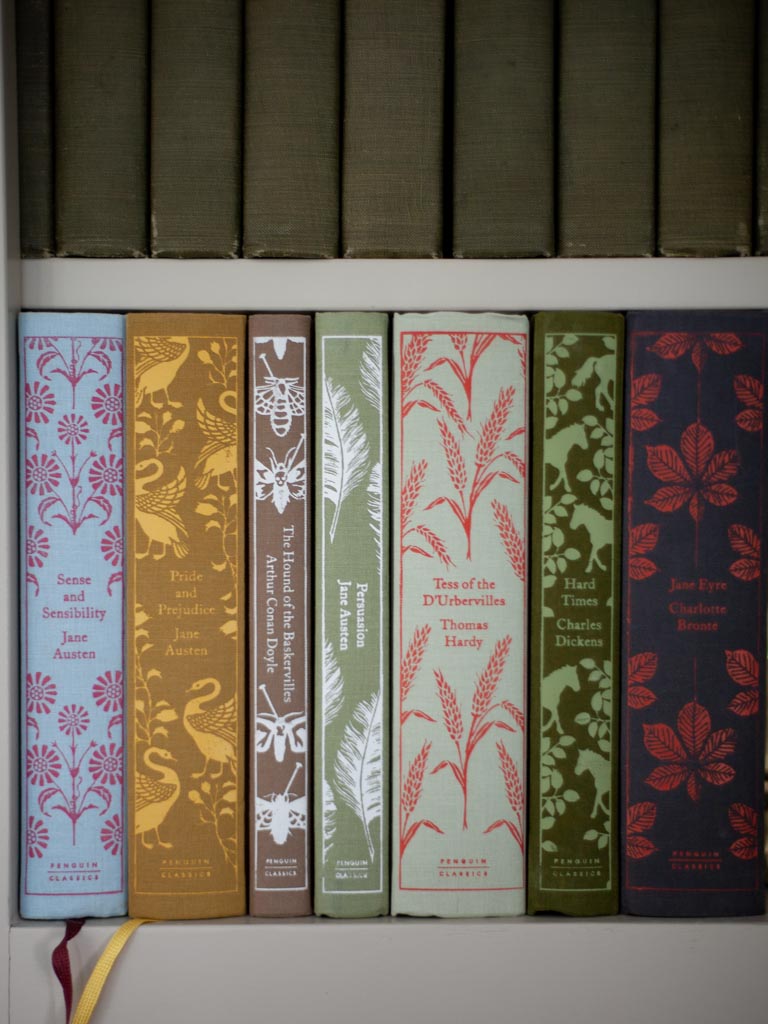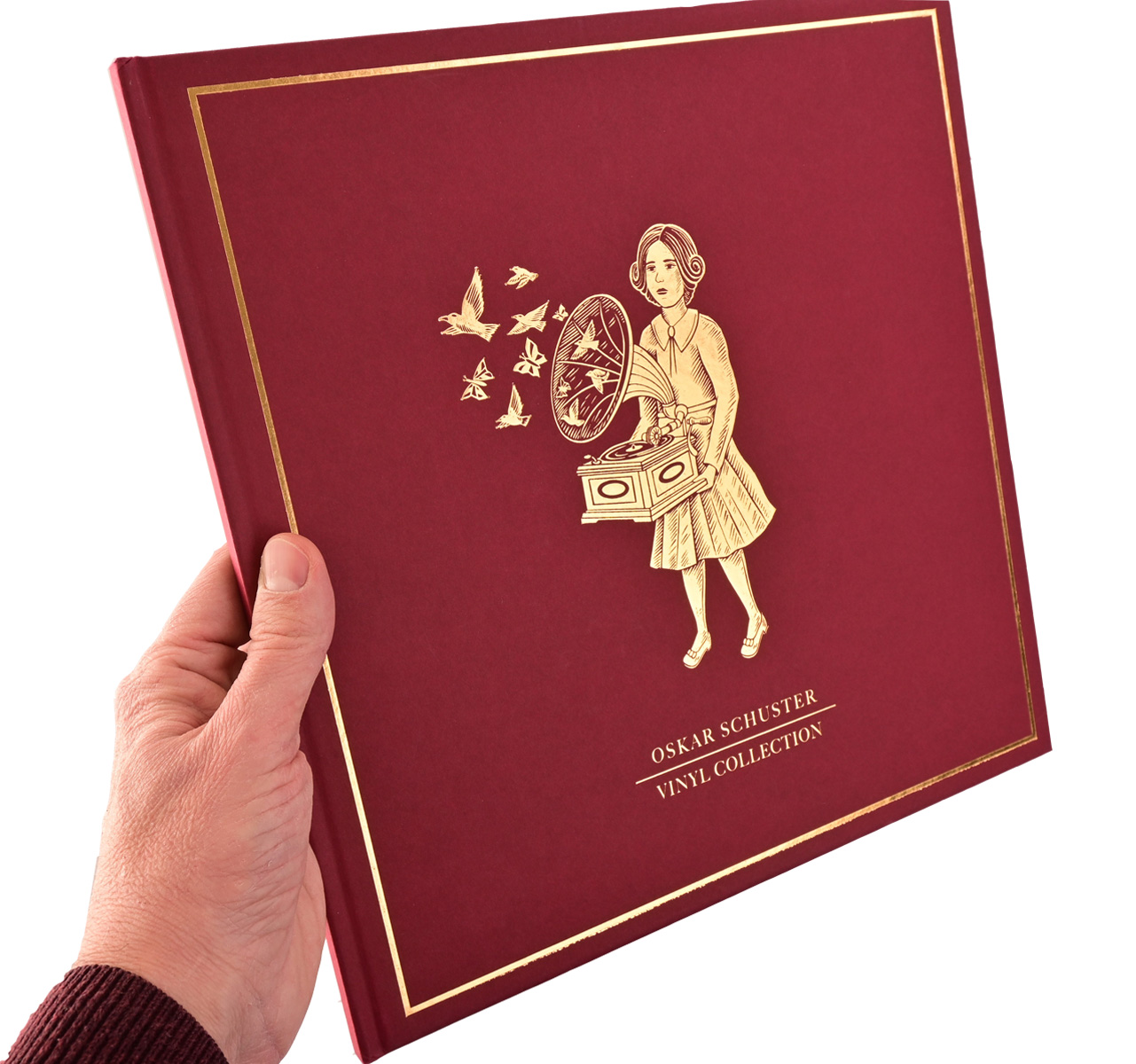Hardcover Books That Make Perfect Gifts for Readers
Hardcover Books That Make Perfect Gifts for Readers
Blog Article
A Comprehensive Overview to the Process of Hardcover Books Printing
When you start the trip of hardbound book printing, understanding the entire process is necessary. As you navigate through binding and high quality control, you'll discover that every choice influences the publication's total allure.
Recognizing the Hardbound Book Structure
When you explore the globe of hardbound publications, you'll swiftly notice that their structure is distinctive and deliberate. You'll discover a textile or leather covering, which not just enhances aesthetic appeals yet also adds to the book's long life.
The message block itself consists of numerous signatures, or folded up sheets, stitched with each other for toughness. You'll see that the spine is enhanced, permitting a smooth lay-flat reading experience - hardcover books. Additionally, guide's weight commonly shares a sense of quality and permanence
Hardcover publications typically feature a dust jacket, which works as a marketing tool while securing the cover. Recognizing these elements helps you appreciate the craftsmanship behind hardcover publications and their one-of-a-kind appeal in the literary world.
Manuscript Preparation and Editing
Getting your manuscript all set for printing is essential, and it begins with correct format guidelines. You'll require to understand the modifying procedure to fine-tune your job and assure it resonates with visitors. And also, grasping checking strategies can help you catch those annoying mistakes prior to your publication goes to publish.

Manuscript Formatting Guidelines
Appropriate manuscript formatting is essential for producing a professional-looking hardbound book. Begin by choosing a common font like Times New Roman or Arial in 12-point dimension. Usage double-spacing throughout the file to boost readability. Establish your margins to 1 inch on all sides, giving your message room to take a breath. Number your web pages in the top right edge, and include your phase titles at the beginning of each brand-new section. Use clear headings to show sections, and avoid excessive formatting like strong or italics unless necessary. Make sure to check your manuscript for consistency in vogue, making certain that every little thing from punctuation to spacing sticks to your chosen guidelines. Adhering to these steps will certainly set a solid foundation for your publication.
Modifying Process Basics
Editing your manuscript is a necessary action that can change it from a rough draft into a sleek end product. Beginning by checking out your job critically, focusing on structure, flow, and quality. Look for variances in your story, personality growth, or argumentation. It's valuable to take breaks in between rounds of editing and enhancing to obtain fresh perspectives. Do not be reluctant to reduce unnecessary web content or rephrase unpleasant sentences; this will certainly enhance readability. Consider seeking responses from relied on peers or specialist editors that can offer important insights. Bear in mind, modifying isn't just about dealing with errors; it has to do with improving your voice and guaranteeing your message resonates with viewers. Accept the process, and you'll see your manuscript sparkle.
Proofreading Methods Summary
Once you have actually polished your manuscript through editing and enhancing, the following step is to assure it's complimentary of errors that can sidetrack readers. Start by relaxing after editing; fresh eyes capture mistakes much better. Read your manuscript aloud-- this aids you hear unpleasant phrasing and spot typos. Use electronic tools like spell checkers for preliminary scans, but don't rely only on them. Take into consideration printing your manuscript; analysis on paper can reveal mistakes that displays miss out on. Concentrate on one sort of error each time, whether it's spelling or grammar, to avoid sensation overwhelmed. Ultimately, enlist a relied on close friend or expert proofreader to provide a fresh viewpoint. Their feedback can highlight concerns you might ignore.
Creating guide Cover and Inside
When you're designing your book cover and inside, you'll intend to concentrate on essential design elements that capture your audience's focus. Choosing the best typography styles and meticulously selecting colors and imagery can make all the difference in conveying your book's theme. Let's check out how these choices can elevate your work and draw in readers.
Vital Style Elements
Creating an attractive book cover and a properly designed inside is vital for bring in viewers and enhancing their experience. Choose colors and images that reflect your book's theme and state of mind.
A clean, orderly design assists readers navigate easily. Keep in mind, a natural style throughout your publication promotes a specialist look that can substantially impact a visitor's choice to pick it up.
Picking Typography Designs
Typography plays a necessary function in both the publication cover and indoor design, forming how readers regard your material. When choosing typography designs, consider your book's genre and target audience. A traditional serif typeface might work well for literary fiction, while a modern sans-serif may fit a modern story. Guarantee readability; your text ought to be simple on the eyes, specifically for longer flows. Take notice of font size and line spacing, as these components influence overall flow. Mixing typefaces can include interest, however restrict it to two or 3 to maintain comprehensibility. Believe concerning pecking order-- use different styles for headings and body message to direct readers easily with your job. Your typography choices will considerably influence the viewers's experience.
Color and Images Option
Picking the best shades and images is necessary for capturing viewers' focus and communicating your publication's styles. Start by considering your category; vivid shades might function for a youngsters's publication, while low-key tones fit an enigma story. hardcover books. Usage imagery that reverberates with your material-- pictures, illustrations, or over here abstract layouts can boost your message
Consider the emotions you wish to stimulate. Cozy colors can produce exhilaration, while great shades usually convey peace. When developing the cover, make sure the images doesn't bewilder the title and author's name; clarity is vital. Inside, utilize regular color design that enhance your typography. This natural technique not only raises your publication's aesthetic yet also improves the reader's experience, making it extra unforgettable.
Selecting the Right Paper and Materials
When choosing paper and materials for your hardbound publication, it's necessary to consider just how they'll impact the general appearance and feeling of your project. Start by selecting the right paper weight; much heavier supply commonly communicates quality and toughness, while lighter paper can produce a more fragile touch. Consider the coating as well; shiny paper boosts photos and shades, while matte can supply an innovative, understated look.
Cloth, natural leather, or published paper can establish the tone for your book. Furthermore, believe concerning the binding products; using top quality sticky guarantees your publication lasts.
Ultimately, the selections you make right here mirror your vision, so put in the time to sample different materials (hardcover books). Your selections will assist create a publication that's not only aesthetically attractive but useful and also durable
The Printing Process: Strategies and Technologies
A selection of printing methods and technologies can bring your hardbound publication to life, each offering special advantages. Digital printing is a popular selection for short runs, permitting for fast turnaround and cost-effective remedies.
For unique effects, you might take into consideration methods like foil marking or embossing, which can include an extravagant touch to your cover. Furthermore, you can go with numerous inks, consisting of green alternatives that provide to environmentally aware visitors. Understanding these techniques aids you Read Full Report make notified decisions, guaranteeing your hardbound publication not only looks terrific but also fulfills your manufacturing requires effectively. Select the appropriate approach to elevate your book's allure and influence.
Binding Methods for Hardcover Books
A number of binding methods can change your hardcover publication into a durable and eye-catching item. One more technique is the excellent binding, which makes use of glue to hold the pages with each other, enabling for a smooth back however less resilience contrasted to instance binding.
You may likewise take into consideration spiral binding, which permits your book to lay level, making it optimal for workbooks or manuals. However, it does not use the same safety cover as case binding. Ultimately, there's the saddle stitch technique, ideal for smaller books, where sheets are folded up and stapled together. Each binding technique has its benefits and fits different requirements, so consider your publication's purpose and target market when choosing the most effective option for your job.
High Quality Control and Final Touches
After choosing the right binding technique for your hardbound publication, high quality control comes to be important to confirm your end product meets your expectations. Beginning by evaluating the printed pages for any type of mistakes or incongruities in color and design. You do not desire to miss out on any typos or misprints that might affect your visitors' experience.
Following, inspect the binding honesty. Confirm the web pages are firmly connected which the spine is durable. A well-bound publication not just looks specialist but also feels long lasting in your hands.
Additionally, take note of the cover. Search for any kind of scuff marks or here are the findings misalignments in the art work. Make certain they're applied consistently throughout all copies. if you have actually chosen for special finishes like embossing or aluminum foil stamping.
Finally, perform a comprehensive inspection of the whole set before moving to distribution. This means, you can verify that every book reflects your high criteria.
Often Asked Questions
For how long Does the Hardcover Book Printing Process Generally Take?

What Is the Minimum Order Amount for Hardbound Books?
The minimum order amount for hardbound books typically starts around 100 duplicates, yet it can differ based upon the printer. You must contact your selected printing service for their specific needs and rates.

Can I Print Hardbound Books in Custom Sizes?
Yes, you can print hardcover publications in custom sizes. Lots of printing solutions offer versatility with measurements, permitting you to choose a format that matches your task. Just verify the specs prior to positioning your order.
Are There Eco-Friendly Options for Hardbound Book Printing?
Yes, you can find eco-friendly choices for hardcover publication printing. Several companies utilize recycled products and lasting inks. Just ask your printer regarding their environment-friendly practices to assure your project lines up with your environmental worths.
What Are the Costs Associated With Hardcover Publication Printing?
When taking into consideration hardbound publication printing prices, you'll require to consider products, style, and printing techniques. Added expenditures like delivery and binding can additionally affect your general spending plan, so strategy appropriately for your job.
When you commence the journey of hardcover book printing, understanding the entire procedure is important.A range of printing techniques and technologies can bring your hardcover book to life, each offering special benefits. Exactly how Long Does the Hardcover Book Printing Process Usually Take?
The hardbound book printing process usually takes about 2 to 6 weeks.Yes, you can find environment-friendly alternatives for hardbound book printing.
Report this page